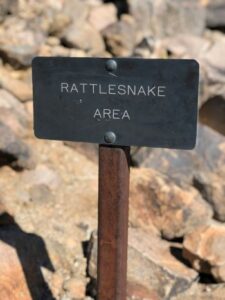Picture this: You’re enjoying a beautiful day on the trails with your beloved pooch when suddenly, a snake slithers across your path. Your heart skips a beat, but your dog? He’s cool as a cucumber, backing away calmly. Sounds like a dream, right? Well, it doesn’t have to be! Did you know that proper snake avoidance training can reduce the risk of snake bites in dogs by up to 95%? That’s right – you can teach an old (or young) dog new tricks, and this one might just save their life! In this guide, we’ll dive into the world of snake avoidance training for dogs. From understanding the basics to mastering advanced techniques, we’ve got you covered. So, are you ready to turn your curious canine into a snake-savvy superstar? Let’s get started!
Table of Contents
Understanding the Importance of Snake Avoidance Training
When it comes to our furry companions, their safety is paramount. Unfortunately, statistics reveal alarming numbers regarding dog snake bites. In the United States alone, thousands of dogs suffer from snake bites every year, leading to serious injuries and, in some cases, even death. Understanding these risks is crucial for any pet owner who enjoys outdoor activities.
Dogs are inherently curious creatures; their instinct to explore can often put them in harm’s way. When they encounter a snake, their curiosity might lead them to approach rather than retreat. This natural behavior makes snake avoidance training essential for both safety and peace of mind.
Teaching dogs to recognize and avoid snakes not only protects them but also enhances their overall behavioral training. The benefits of snake avoidance training extend beyond preventing bites; they help build confidence in dogs when navigating their natural environment. Understanding how snake avoidance training works on a psychological level can also empower dog owners to employ effective methods.
Preparing for Snake Avoidance Training
Before embarking on this important training, it’s essential to assess your dog’s temperament and learning style. Every dog is unique, and understanding their personality will play a significant role in how they respond to snake avoidance training.
Gathering the necessary equipment is another critical step. Investing in high-quality snake replicas and other training aids can enhance the effectiveness of your sessions. Select tools that mimic the sights, sounds, and scents of real snakes to create a realistic training environment.
Choosing the right training environment is equally important. Start in a controlled space where your dog feels comfortable. Gradually introduce outdoor settings as your dog becomes more proficient. Setting realistic goals and timelines for training will help you stay motivated and track your dog’s progress effectively.
Basic Snake Avoidance Techniques for Dogs
Now that you’re prepared, let’s explore some basic snake avoidance techniques suitable for all dogs. The first step is introducing your dog to the concepts of sight, sound, and scent training. Using snake replicas, you can simulate encounters without any real danger.
Incorporating positive reinforcement methods is crucial for encouraging avoidance behavior. Whenever your dog successfully avoids the snake replica, reward them with treats and praise. This technique will help reinforce good behavior and make training enjoyable.
Gradual exposure techniques will help build your dog’s confidence in recognizing and avoiding snakes. Start with short sessions that allow them to explore the replicas and gradually increase the complexity of the training. Consistency is key to solidifying these behaviors.
Advanced Snake Avoidance Training Methods
Once your dog has mastered the basics, you can move on to advanced snake avoidance training methods. Professional training programs offer an excellent opportunity for dogs to learn in a structured environment. These programs are often led by experienced trainers who can provide valuable insights.
E-collar training has gained popularity in recent years, but it’s essential to approach this method with caution. Understanding the pros and cons of e-collars is vital for making an informed decision. If you choose this route, ensure you follow best practices to promote a positive learning experience for your dog.
Scent discrimination exercises can also be beneficial for advanced training. These exercises challenge your dog to differentiate between various snake species, improving their recognition skills. Introducing real snake encounters in controlled environments can further enhance their understanding of safe distancing.
Reinforcing Snake Avoidance Behaviors at Home
Training doesn’t stop when you leave the training ground. Reinforcing snake avoidance behaviors at home is crucial for long-term success. Creating safe mock scenarios for practice will help keep your dog engaged and prepared for real-life situations.
Incorporating snake avoidance cues into daily routines is another effective strategy. For example, use specific commands when your dog encounters wildlife during walks. This consistency will help them understand the importance of avoiding snakes when they see or hear them.
Keep training sessions fresh and exciting by using toys and treats to maintain your dog’s interest. Regular refresher courses will help keep their skills sharp and ensure they remain snake-savvy throughout their lives.
Addressing Common Challenges in Snake Avoidance Training
Training can come with challenges, and addressing common issues is vital for progress. For instance, some dogs may exhibit fear or aggression towards snakes. Understanding how to manage these feelings through gradual desensitization will help alleviate their anxiety.
Highly curious or stubborn dogs may require additional patience during training. Adapting your approach to suit their individual personalities can lead to better results. Remember that different breeds and ages may respond differently to training; be flexible in your methods.
Balancing avoidance training with general obedience is essential. Integrating snake avoidance training into your dog’s overall training regimen will create a well-rounded approach that ensures they thrive in various situations.
Integrating Snake Awareness into Outdoor Activities
Outdoor activities can be thrilling for both you and your dog. Teaching them to alert you to snake presence is a vital skill that enhances safety during your explorations. Paying attention to their body language can often provide clues about nearby snakes.
Trail safety is another consideration for dog owners. Leash training in snake-prone areas can help you maintain control over your dog and prevent unwanted encounters. Recognizing potential snake habitats while hiking or walking can also minimize risks.
When encountering a snake during outdoor adventures, knowing what to do can be crucial. Teach your dog to back away calmly and seek assistance if necessary. By incorporating these practices into your outdoor activities, you’ll create a safer environment for both you and your canine companion.
Conclusion
Congratulations! You’re now equipped with the knowledge to turn your furry friend into a snake-avoiding pro. Remember, consistency is key, and every dog learns at their own pace. By investing time in snake avoidance training, you’re not just teaching a skill – you’re potentially saving your dog’s life.
Why wait? Start implementing these techniques today and enjoy peace of mind on your outdoor adventures. Have you considered joining a local snake avoidance training group? It’s a great way to practice and meet other safety-conscious dog owners. Here’s to happy, safe trails with your newly snake-savvy companion!

